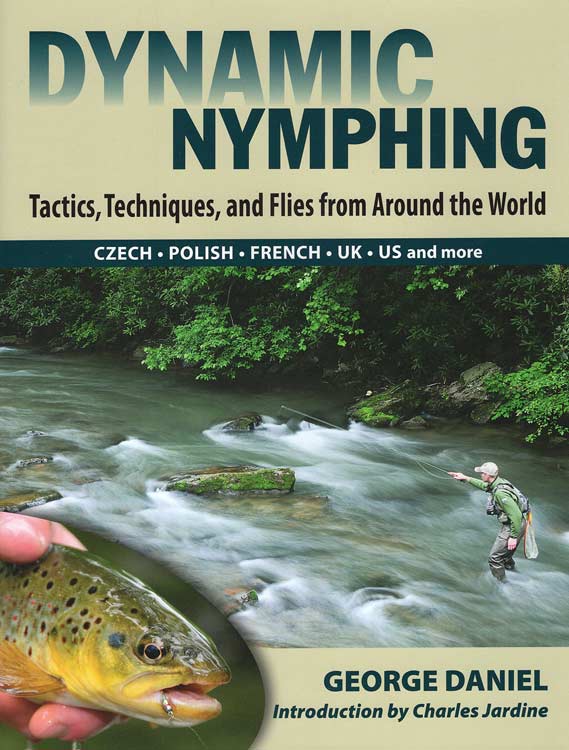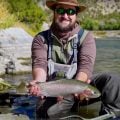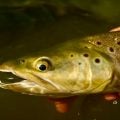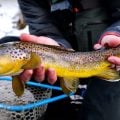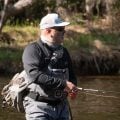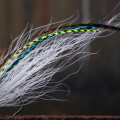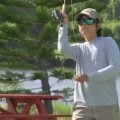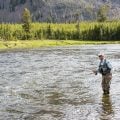Understanding Different Types of Trout Lies
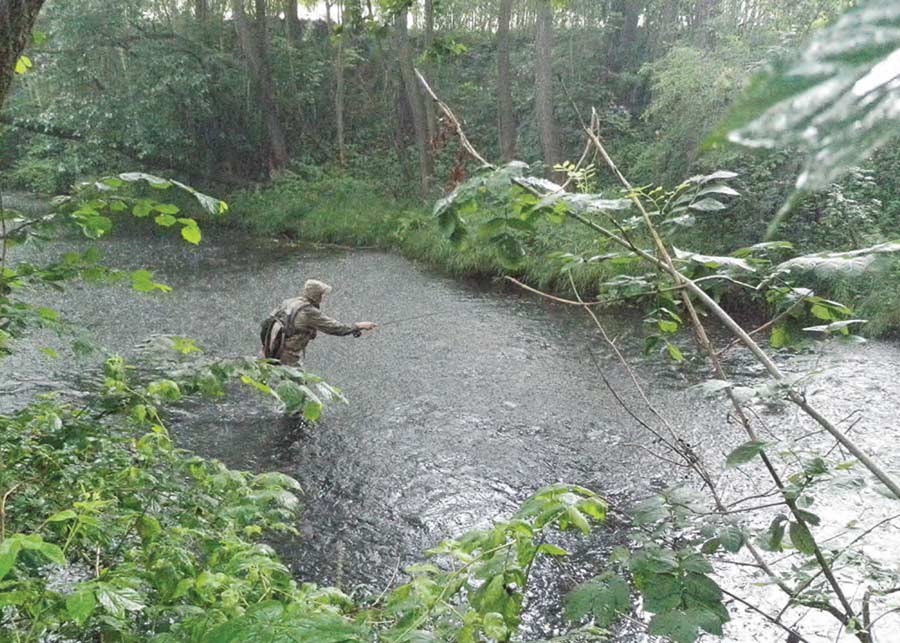
During a heavy rain, trout come out from their sheltering lies and feed in relatively shallow water. Pictured is Matt Rose fishing a shallow riffle in heavy rain during the 2009 World Youth Fly Fishing Championships in the Czech Republic. Matt ended up with more than a dozen fish, all caught in water less than 10 inches deep. Photos: George Daniel
Excerpted from Dynamic Nymphing: Tactics, Techniques, and Flies from Around the World by George Daniel ( Stackpole Books, 2011).
Anglers refer to different spots where fish hold as “lies.” Trout lies fall into three basic categories: feeding, sheltering, and prime lies.
Feeding Lies
Feeding lies are locations that offer foraging opportunities but typically little protection from predators in the form of overhead cover. Shallow water and shallow riffles are great examples of feeding lies. Riffles are the breeding grounds for many stream invertebrates and offer abundant food to the trout. However, trout are exposed to predators when holding in shallow water, especially during daylight hours, when they are easy targets for herons and eagles. Therefore, trout need to strategically pick times to feed when they are afforded the greatest amount of protection and will move into these feeding lies when certain variables such as low light or off-color water permit them to feed with more security. Trout holding in feeding lies are often more vulnerable, and therefore wary, but they are preoccupied with eating and that improves your chances of catching them.
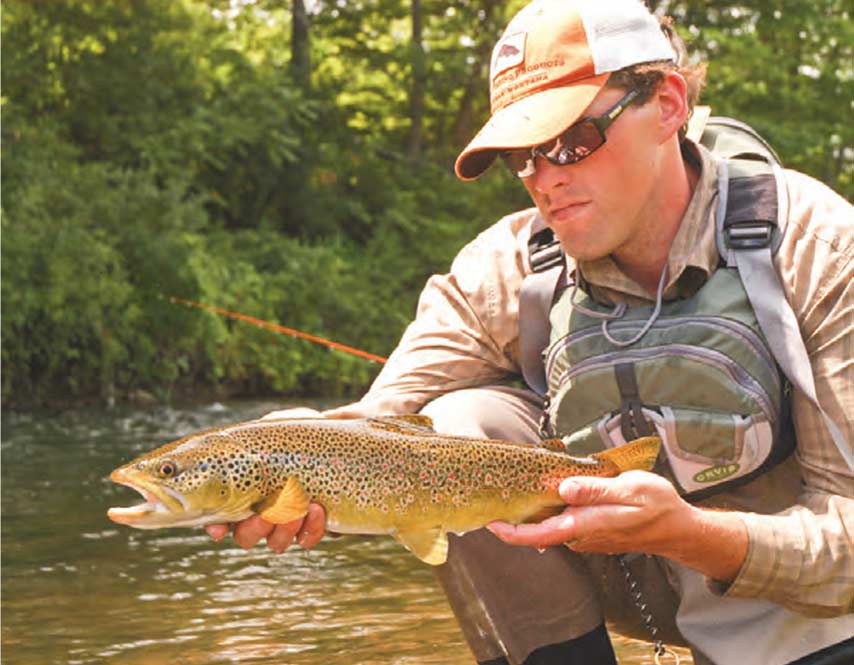
Josh Day holds a healthy brown that he caught on the West Branch of the Delaware River while fishing a sunken terrestrial along a shaded bank in the late morning. The trout was holding in just 6 inches of water but felt protected by the distinct shade line. We caught several more fish before the sun moved directly overhead, eliminating the shade line.
Sheltering Lies
Trout have to balance their needs for shelter and food. Sometimes they are more focused on hiding from predators than feeding, and sheltering lies provide trout with more defensive features than foraging opportunities. When water temperatures exceed 70 degrees, trout will seek the deepest lie in a river. Less light is able to penetrate the deeper water, and as a result, cooler temperatures are found at these depths. A deep sheltering lie provides trout with a comfort zone during the daylight hours, and the fish may not move out of this spot until later in the evening, when water temperatures drop as a result of cooler air temperatures. Eventually these fish will move into the riffles, banks, or tailouts when conditions are right. This is especially true of large trout, which are known for their nocturnal feeding habits, and trying to catch big fish when they are holding in their daytime sheltering lies can be a waste of time.
Trout in sheltering lies are often the most difficult to catch, because they are not always in a feeding mode. When fishing a sheltering lie, I frequently use a wild pattern with some motion added to the fly in the form of rubber legs or a CDC collar to provoke a strike. Just like humans, sometimes trout need a little encouragement. A deep sheltering lie does occasionally give up trout, but I prefer to spend most of my time fishing through feeding and prime lies. However, at times trout holding in sheltering lies aggressively seek food such as in low-light conditions or during a heavy hatch. The deepest part of a pool is usually a sheltering lie, and it does pay to work this area while fishing. Nevertheless, it’s preferable to spend more time in the tailout, drop-offs, and run area of a pool, as these are prime and feeding lies during typical fishing conditions. The goal is to spend the majority of your time fishing the most productive river sections.

This hefty brown fell to a jig-style stonefly at the head of a fast run. Brian Wilt carries the same stonefly pattern in three different weights that vary by bead-head size. It took Brian two attempts before he f igured out the correct amount of weight to effectively cover the heavy run.
Prime Lies
The prime lies provide both shelter and feeding opportunities simultaneously, and the strongest and biggest trout end up here. Experienced anglers coming across such an area think to themselves, “There’s got to be a big one in there.” Unfortunately for the fly fisher, a prime lie is sometimes the most difficult spot to properly place a fly. As an example, a fallen tree may lie horizontally in a great-looking run. The fallen tree provides the fish with overhead cover from predators, but it also provides the angler with an unwanted obstacle to presenting the fly.
A downstream approach with a suspension device is a great tool in such a situation. Sometimes you catch a fish, and other times you lose a fly. But as Joe Humphreys says, “Don’t be afraid to cast into the most inaccessible areas. The worst thing that can happen is that you lose a fly. And that isn’t life-threatening.” Undercut banks with the current pulling toward the bank are also favorite prime lies. Not only does the undercut bank provide cover, but the current also brings the food right to the trout. Wherever you find an undercut bank with current, there’s a good chance a big fish is there. A large rubberleg stonefly tied on a jig hook is one of my favorite nymphs when attempting to pull a big fish from its cover. The jig action on this stonefly is seductive.
Prime lies can also occur in the runs, the transitions from riffles to pools. Runs provide sufficient depth to comfort the trout while the currents continue to serve as food lanes. If I had to pick one water type to fish year-round, a good run would be my first choice. The currents under the runs are often slow enough to hold fish during the winter months, when a trout’s metabolism is low, but there’s still enough flow to create distinct feeding channels on a year-round basis. This type of prime lie is a fish magnet.
